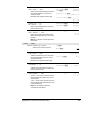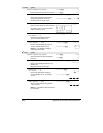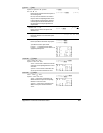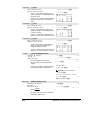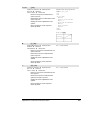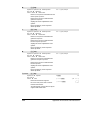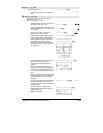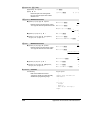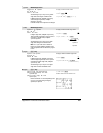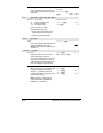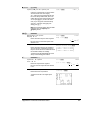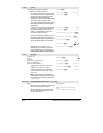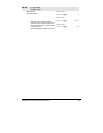
Appendix A: Functions and Instructions 909
G
(gradian)
MATH/Angle menu
expression1
G
¡
¡¡
¡ ⇒
⇒⇒
⇒
expression
list1
G
¡
¡¡
¡ ⇒
⇒⇒
⇒
list
matrix1
G
¡
¡¡
¡ ⇒
⇒⇒
⇒
matrix
This function gives you a way to use a gradian
angle while in the Degree or Radian modes.
In Radian angle mode, multiplies
expression
by
p/200. In Degree angle mode, multiplies
expression 1 by g/100.
In Gradian mode, returns expression1 unchanged.
In Degree, Gradian or Radian mode:
cos(50
G
) ¸
‡2
2
cos({0,100
G
,200
G
}) ¸ {1,0.-1}
ô
(radian)
MATH/Angle menu
expression1
ô ⇒
⇒⇒
⇒
expression
list1
ô ⇒
⇒⇒
⇒
list
matrix1
ô ⇒
⇒⇒
⇒
matrix
In Degree angle mode, multiplies
expression1
by
180/p. In Radian angle mode, returns
expression1
unchanged. In Gradian mode, multiplies
expression1
by 200/p.
This function gives you a way to use a radian
angle while in Degree and Gradian mode.
Hint: Use ôif you want to force radians in a
function or program definition regardless of the
mode that prevails when the function or program
is used.
In Degree, Gradian or Radian angle mode:
cos((p/4)ô ) ¸
‡2
2
cos({0
ô,(p/12)ô,ë pô}) ¸
{1
(
3
+1)
ø
2
4
ë 1}
¡
¡¡
¡
(degree)
2“ key
expression1
⇒
⇒⇒
⇒
expression
list1
¡
¡¡
¡ ⇒
⇒⇒
⇒
list
matrix1
¡
¡¡
¡ ⇒
⇒⇒
⇒
matrix
In Radian angle mode, multiplies
expression
by
p/180. In Degree angle mode, returns
expression
unchanged.In Gradian angle mode, multiplies
expression1
by 10/9.
This function gives you a way to use a degree
angle while in Gradian and Radian mode.
In Degree, Gradian or Radian angle mode:
cos(45
¡) ¸
‡2
2
cos({0,
p/4,90¡,30.12¡}) ¥¸
{1 .707
... 0 .864...}
(angle) 2’ key
[
radius,
q_
angle
] ⇒
⇒⇒
⇒
vector
(polar input)
[
radius,
q_
angle,Z_coordinate
] ⇒
⇒⇒
⇒
vector
(cylindrical input)
[
radius,
q_
angle,
f_angle
] ⇒
⇒⇒
⇒
vector
(spherical input)
Returns coordinates as a vector depending on the
Vector Format mode setting: rectangular,
cylindrical, or spherical.
[5,60¡,45¡] ¸
In Radian mode and vector format set to:
rectangular
cylindrical
spherical



